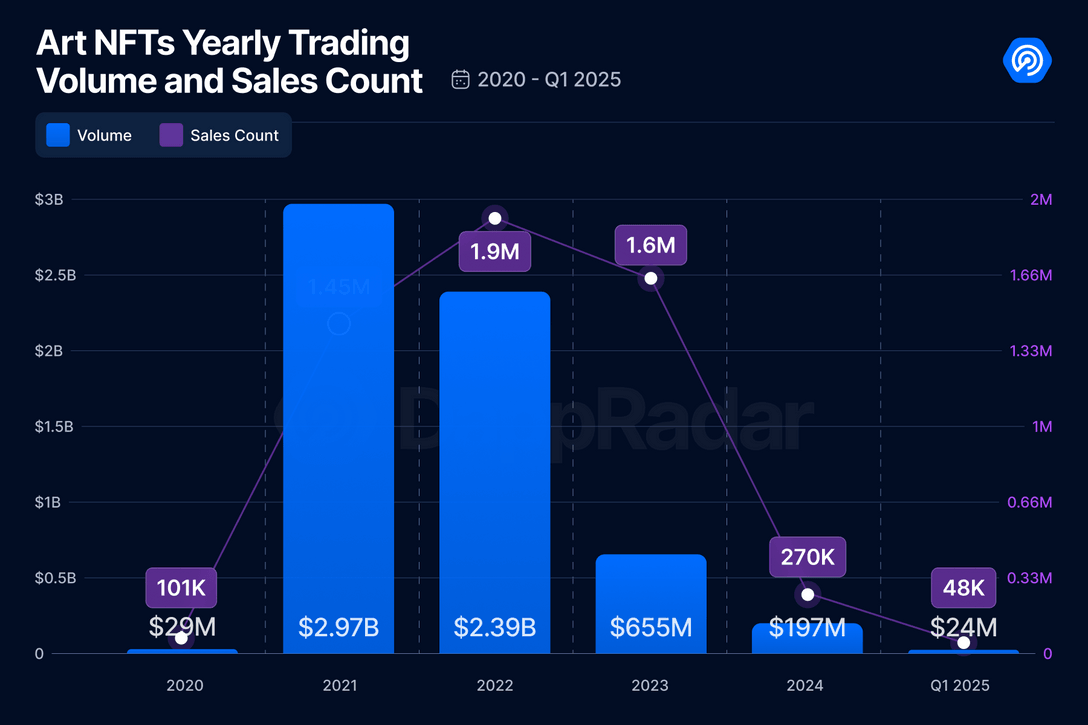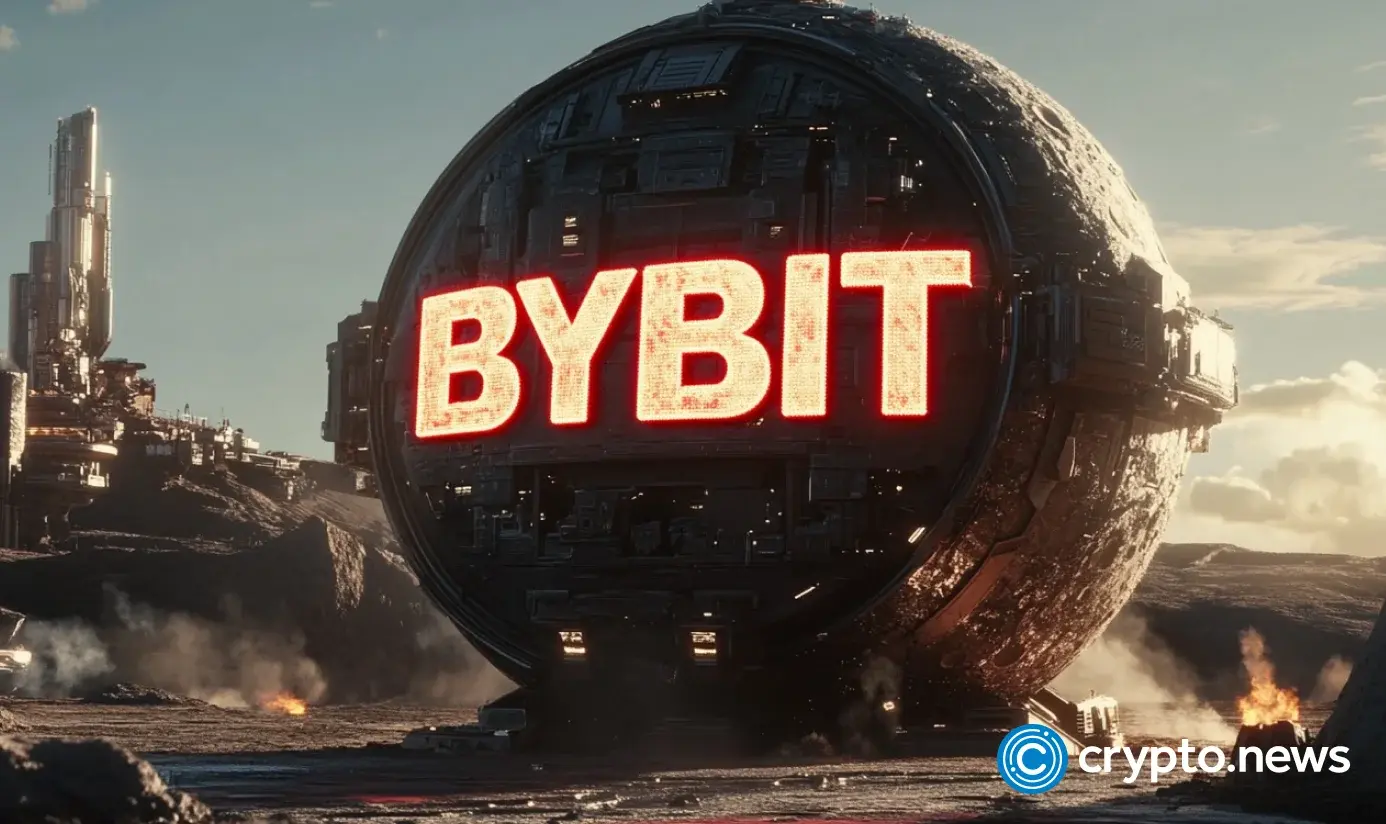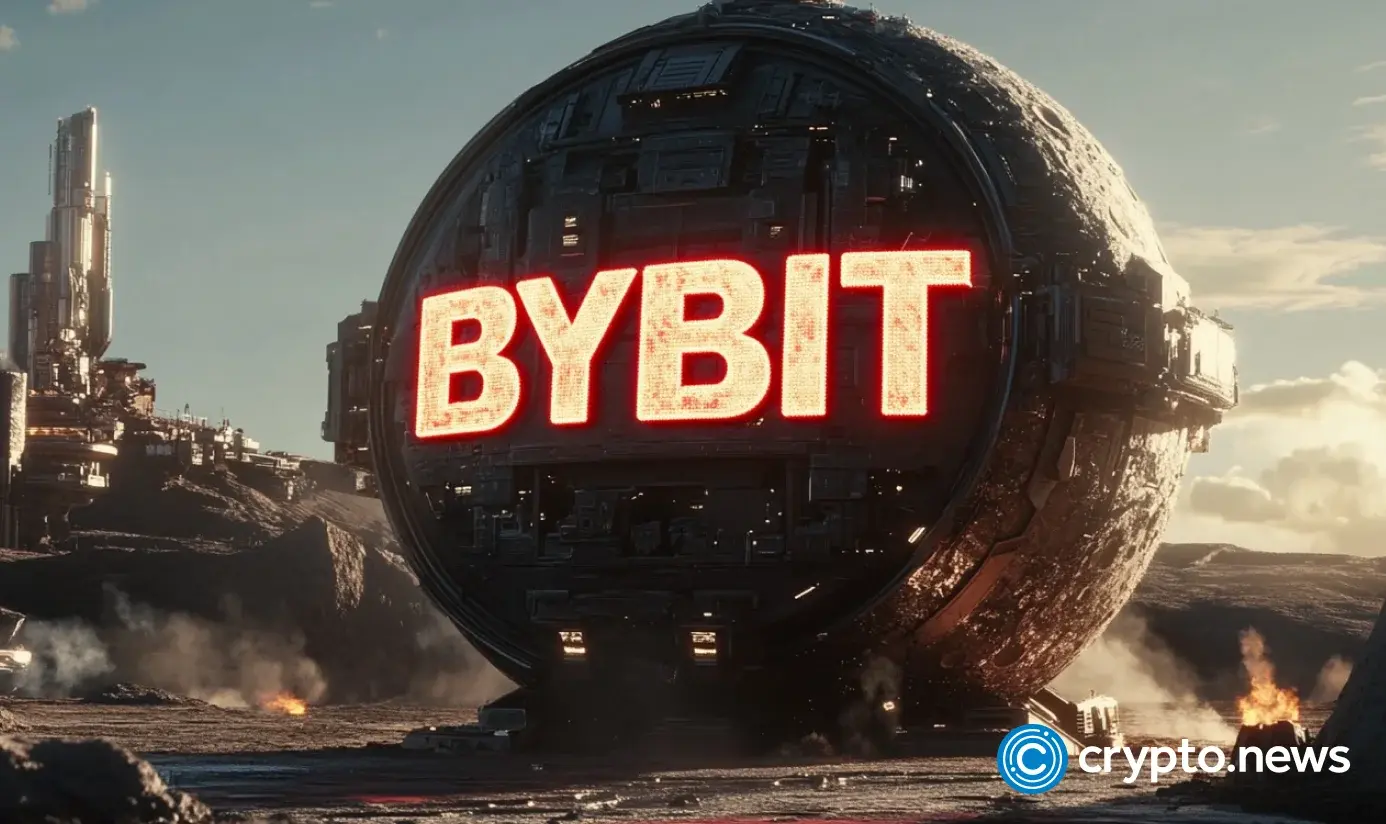bybit
Bybit brings bbSOL yield to more users via key DeFi integrations
Published
5 months agoon
By
admin

Bybit is expanding yield opportunities for holders of its liquid staking token, bbSOL, by integrating several decentralized finance ecosystem.
The crypto exchange, the second-largest globally by trading volume, announced the initiative on Nov. 15, highlighting new DeFi yield opportunities made possible through strategic partnerships
According to the press release, Bybit is collaborating with platforms such as RateX, marginfi, and Save to bolster bbSOL, which recently reached an all-time high of $230 less than three months after its launch.
Bybit has partnered with leveraged yield exchange RateX to introduce synthetic yield farming for bbSOL holders. This product enables holders to trade synthetic yield tokens tied to various yield-bearing assets while benefiting from fixed yield conversion and liquidity provision.
Bybit’s is also eyeing bbSOL dominance with collaboration with leading Solana (SOL) lending and borrowing protocols Save and marginfi.
Together, the DeFi protocols bring a total value locked of $900 million in liquidity to bbSOL. DeFiLlama data shows Save has a TVL of $506 million, while marginfi’s currently stands at around $478 million.
Currently, bbSOL is available across eight DeFi projects on Solana and is increasingly adopted within centralized finance products on Bybit. Users can convert over 300 crypto assets on the exchange into bbSOL, enhancing its accessibility.
Bybit launched bbSOL, its first exchange-backed liquid staking token on Solana in September.
The ecosystem also boasts of another exchange-based Solana LST by Binance, bnSOL. Like bbSOL, Binance staked SOL allows holders to earn from their staked Solana coins as well as staking rewards from other Binance products.
Source link
You may like


Stripe Tests New Stablecoin Project as $3.7T Market Looms


Falling Wedge Pattern Confirms $264 target


Ethereum community members propose new fee structure for the app layer


Crypto Investors Sue Nike, Accuse Apparel Giant of Rug Pull After Abrupt Closure of Metaverse Business: Report


Top cryptocurrencies to watch: Pi Network, XRP, Sui


This Week in Crypto Games: Ubisoft’s ‘Might & Magic’, ‘Peaky Blinders’ in Development
bybit
Bybit’s CEO Ben Zhou Says Nearly 28% Funds From $1.4B Hack Have Gone Dark
Published
7 days agoon
April 21, 2025By
admin

Cryptocurrency exchange Bybit’s CEO Ben Zhou said that 27.95% of the funds lost in the $1.4 billion exploit engineered by the North Korean Lazarus Group have gone dark or become untraceable.
“Total hacked funds of USD 1.4bn around 500k ETH. 68.57% remain traceable, 27.59% have gone dark, 3.84% have been frozen. The untraceable funds primarily flowed into mixers then through bridges to P2P and OTC platforms,” Zhou said in an executive summary published on X on Monday.
The untraceable funds were moved into mixers before being transferred through bridges to P2P (peer-to-peer) and OTC (over-the-counter) platforms, the post explained, mentioning the use of Wasabi, a crypto mixer, to wash off a certain amount of BTC, following which a portion of these funds entered into other mixers, including Railgun, Tornado Cash and CryptoMixer.
The malicious entity then executed multiple cross-chain swaps through Thorchain, eXch, Lombard, LiFi, Stargate and SunSwap, with the final stage involving the conversion of these illicit funds into more liquid assets.
The North Korea-linked Lazarus Group hacked Bybit in February, draining 500,000 ether (ETH) by taking “control of the specific ETH cold wallet and transferring all the ETH in the cold wallet to this unidentified address.”
Forensics reveal that of the hacked funds, a total of 432,748 ETH, representing 84.45%, has been transferred from ether to bitcoin via Thorchain. Notably, 67.25% of these funds, amounting to 342,975 ETH (around $960.33 million), has been converted into 10,003 BTC and distributed across 35,772 wallets with an average of 0.28 BTC per wallet.
Further, 1.17% of the funds, or 5,991 ETH (approximately $16.77 million), remains on the Ethereum blockchain, stashed across 12,490 wallets.
Lastly, the Lazarus Bounty initiative has received 5,443 bounty reports in two months, of which, 70 have been deemed valid. Zhou said the exchange needs “more bounty hunters that can decode mixers as we need a lot of help there down the road.”
Source link
bybit
NFT industry in trouble as activity slows, market collapses
Published
3 weeks agoon
April 6, 2025By
admin
As the crypto market prepares for turbulence amid the tariff wars, the NFT market seems to be in a worse position.
Trading volumes are declining and marketplaces shutting down.
The once-hyped world of non-fungible tokens, which analysts once boldly projected could balloon to over $264 billion by 2032, now seems to be limping along. Weekly trading volumes have been falling like dominoes for weeks, scaring off capital and dragging the market back to levels not seen since its explosive 2020 debut.

Blockchain analytics firm DappRadar shows that trading volumes in 2021 were riding high, hitting nearly $3 billion.
Fast-forward to the first quarter of 2025. That figure has nosedived 93% to just $23.8 million as “active traders have vanished,” blockchain analyst Sara Gherghelas noted.
“This rapid growth coincided with global shifts driven by the COVID-19 pandemic, accelerating the adoption of digital platforms and pushing artists to explore innovative methods of engaging with their audiences. However, three years later, the hype around Art NFTs has significantly decreased.”
Sara Gherghelas
The data backs her up. In 2024, trading volume dropped nearly 20% from the year prior, while total sales declined 18%. As Gherghelas put it in her 2025 research, it was “one of the worst-performing years since 2020.”
Still speculative assets
In an interview with crypto.news, OutsetPR’s legal officer Alice Frei implied that regulation is still a mess as “governments are still undecided on how to classify NFTs.”
In the U.S., they’re often treated like securities, meaning platforms must walk a legal tightrope. In the U.K., they’re seen more like collectibles under intellectual property law.
“These are examples of leading countries with clear cryptocurrency regulations; in many other countries, the situation is even more uncertain. This lack of regulatory clarity creates an environment that is ripe for fraud and erodes investor confidence. Until there is more consistency, NFT adoption will remain stagnant.”
Alice Frei
Frei also highlighted a deeper issue: beyond the worlds of cryptocurrency and gaming, NFTs are still “trying to prove that they offer real value.”
“In theory, they could revolutionize several industries — think concert tickets that prevent scalping, digital IDs for online verification, or property deeds stored on the blockchain. But in practice, most NFTs are still largely speculative assets.”
Alice Frei
Speaking of gaming, where NFTs have the most potential for mainstream use, their adoption is also struggling, Frei pointed out, recalling that Ubisoft’s Project Quartz, an attempt to integrate NFTs into AAA games, was met with “resistance from players, forcing the company to shut it down.”
Frei notes that gamers are “hesitant about digital assets that feel more like currency than a genuine addition to their experience.”
Revolving door
If the data wasn’t already bleak, March brought more bad news: a string of marketplace shutdowns added fuel to the fire. Among them, South Korean tech giant LG shut down its LG Art Lab, which was launched just three years ago at the height of the NFT mania. The company didn’t share detailed reasons, only saying that “it is the right time to shift our focus and explore new opportunities.”
Just a week later, X2Y2 — a former OpenSea rival that once boasted $5.6 billion in lifetime volume — also ceased its operations, citing a “90% shrinkage of NFT trading volume from its peak in 2021” and struggles to remain competitive in the space.
Then came Bybit. The crypto exchange, still reeling from a $1.46 billion theft linked to North Korea-affiliated hackers, quietly closed its platform.
Emily Bao, head of web3 at Bybit, said the decision would allow the company to “enhance the overall user experience while concentrating on the next generation of blockchain-powered solutions.”
Amid the wave of closures, Frei says the NFT market now “feels like a revolving door.”
“Take Bored Ape Yacht Club, for example – once the pinnacle of NFT status, its prices have dramatically dropped. At the peak, a single Bored Ape sold for $400,000, but now some are barely fetching $50,000. The problem lies in the fact that many NFT projects rely on hype rather than actual utility. If people cannot see long-term value, they are unlikely to return.”
Alice Frei
Last hope
Coinbase, too, seems to be pulling back. While it hasn’t officially shut down its NFT platform, all signs suggest it’s shifting focus. During an earnings call in early 2023, President and COO Emilie Choi indicated that the company sees “medium and long-term opportunities” in NFTs. But its real focus seems to be behind Base, its layer-2 blockchain network.
Coinbase declined to comment on its position as NFT activity continues to decline, despite multiple requests from crypto.news.
The OutsetPR legal officer thinks that with the market’s current trajectory, smaller platforms are unlikely to weather the storm. “Smaller platforms will continue to shut down, leaving only a few dominant players like OpenSea and Blur,” she said.
She explained that the shift is being driven by two major forces. First, tighter regulations are on the horizon, which will likely bring an end to the “Wild West days of NFTs.” Second, the gaming sector may offer NFTs a lifeline—but it’s still a narrow one. As Frei puts it, gaming may be NFTs’ “last hope,” though developers will still need to avoid “pay-to-win mechanics that could turn players away.”
“The hype is over. If NFTs are to survive, they will need to prove that they offer more than just expensive pictures on the blockchain,” Frei concluded.
Source link
bybit
Bybit taps Standard Chartered-backed Zodia Custody following Safe Wallet controversy
Published
4 weeks agoon
April 3, 2025By
admin

Bybit has entered a partnership with crypto custodian Zodia Custody to segregate its custody for institutional clients.
Cryptocurrency exchange Bybit announced in a press release on Thursday a new partnership with Zodia Custody to provide institutional clients with segregated custody, along with off-venue settlement solutions.
In an April 3 press release, Bybit said that thanks to the partnership, its institutional arm, Bybit Institutional, which targets larger investors, wants to provide transparent fees and reduce the risk of exposure for its clients.
Zodia Custody, founded in 2020, offers crypto custody services and is supported by big names like Standard Chartered and SBI Holdings. The key benefit of the latest partnership, as Bybit puts it, is “Independent Custody,” where investors can trade on Bybit while keeping assets held with Zodia Custody, ensuring “full segregation and eliminating co-mingling via the Interchange solution.”
This allows institutional clients to trade on Bybit while keeping assets held with Zodia Custody, ensuring “full segregation and eliminating co-mingling via the Interchange solution,” the press release reads. Additionally, Bybit also claims that thanks to Zodia, institutitonal clients no longer need to pre-fund exchange accounts, which “minimizing exposure to exchange-side vulnerabilities and improving capital efficiency.”
In late February, North Korean hackers targeted Bybit, stealing around $1.46 billion worth of crypto in a highly sophisticated heist. The attack was reportedly carried out by compromising the computer of an employee at Safe, Bybit’s technology provider. Less than two weeks after the breach, Bybit’s CEO Ben Zhou stated that around 20% of the stolen funds had become untraceable, due to the hackers’ use of mixing services. Later on, Zhou indicated that 88% of the stolen funds from the exchange is still traceable
Source link

Stripe Tests New Stablecoin Project as $3.7T Market Looms

Falling Wedge Pattern Confirms $264 target
Dogecoin Confirms Daily Trend Reversal With Breakout, Retest, And New Uptrend

Ethereum community members propose new fee structure for the app layer

Crypto Investors Sue Nike, Accuse Apparel Giant of Rug Pull After Abrupt Closure of Metaverse Business: Report

Top cryptocurrencies to watch: Pi Network, XRP, Sui

This Week in Crypto Games: Ubisoft’s ‘Might & Magic’, ‘Peaky Blinders’ in Development

Why Arbitrum-Nvidia Partnership Collapsed – And What It Means for Web3

Tariff Carnage Starting to Fulfill BTC’s ‘Store of Value’ Promise

The cost of innovation — Regulations are Web3’s greatest asset

Best Crypto to Buy as Derivatives Exchange CME Set to Launch XRP Futures

Metaplanet Buys Additional ¥1.92 Billion Worth Of Bitcoin

Here Are Four Signs the Stock Market Has Bottomed, According to Fundstrat’s Tom Lee

Bitcoin dips below $94,000 as ETFs record $3b weekly inflow

Bitcoin Post-Halving Price Performance Is the Worst on Record. Why?

Arthur Hayes, Murad’s Prediction For Meme Coins, AI & DeFi Coins For 2025

Expert Sees Bitcoin Dipping To $50K While Bullish Signs Persist

3 Voting Polls Show Why Ripple’s XRP Price Could Hit $10 Soon

Aptos Leverages Chainlink To Enhance Scalability and Data Access

Bitcoin Could Rally to $80,000 on the Eve of US Elections

Crypto’s Big Trump Gamble Is Risky

Institutional Investors Go All In on Crypto as 57% Plan to Boost Allocations as Bull Run Heats Up, Sygnum Survey Reveals

The Future of Bitcoin: Scaling, Institutional Adoption, and Strategic Reserves with Rich Rines

Sonic Now ‘Golden Standard’ of Layer-2s After Scaling Transactions to 16,000+ per Second, Says Andre Cronje

Ripple-SEC Case Ends, But These 3 Rivals Could Jump 500x

Has The Bitcoin Price Already Peaked?

A16z-backed Espresso announces mainnet launch of core product

Xmas Altcoin Rally Insights by BNM Agent I

Blockchain groups challenge new broker reporting rule

I’m Grateful for Trump’s Embrace of Bitcoin
Trending

 24/7 Cryptocurrency News6 months ago
24/7 Cryptocurrency News6 months agoArthur Hayes, Murad’s Prediction For Meme Coins, AI & DeFi Coins For 2025

 Bitcoin3 months ago
Bitcoin3 months agoExpert Sees Bitcoin Dipping To $50K While Bullish Signs Persist

 Ripple Price1 month ago
Ripple Price1 month ago3 Voting Polls Show Why Ripple’s XRP Price Could Hit $10 Soon

 24/7 Cryptocurrency News4 months ago
24/7 Cryptocurrency News4 months agoAptos Leverages Chainlink To Enhance Scalability and Data Access

 Bitcoin6 months ago
Bitcoin6 months agoBitcoin Could Rally to $80,000 on the Eve of US Elections

 Opinion6 months ago
Opinion6 months agoCrypto’s Big Trump Gamble Is Risky

 Bitcoin5 months ago
Bitcoin5 months agoInstitutional Investors Go All In on Crypto as 57% Plan to Boost Allocations as Bull Run Heats Up, Sygnum Survey Reveals

 Altcoins3 months ago
Altcoins3 months agoSonic Now ‘Golden Standard’ of Layer-2s After Scaling Transactions to 16,000+ per Second, Says Andre Cronje


